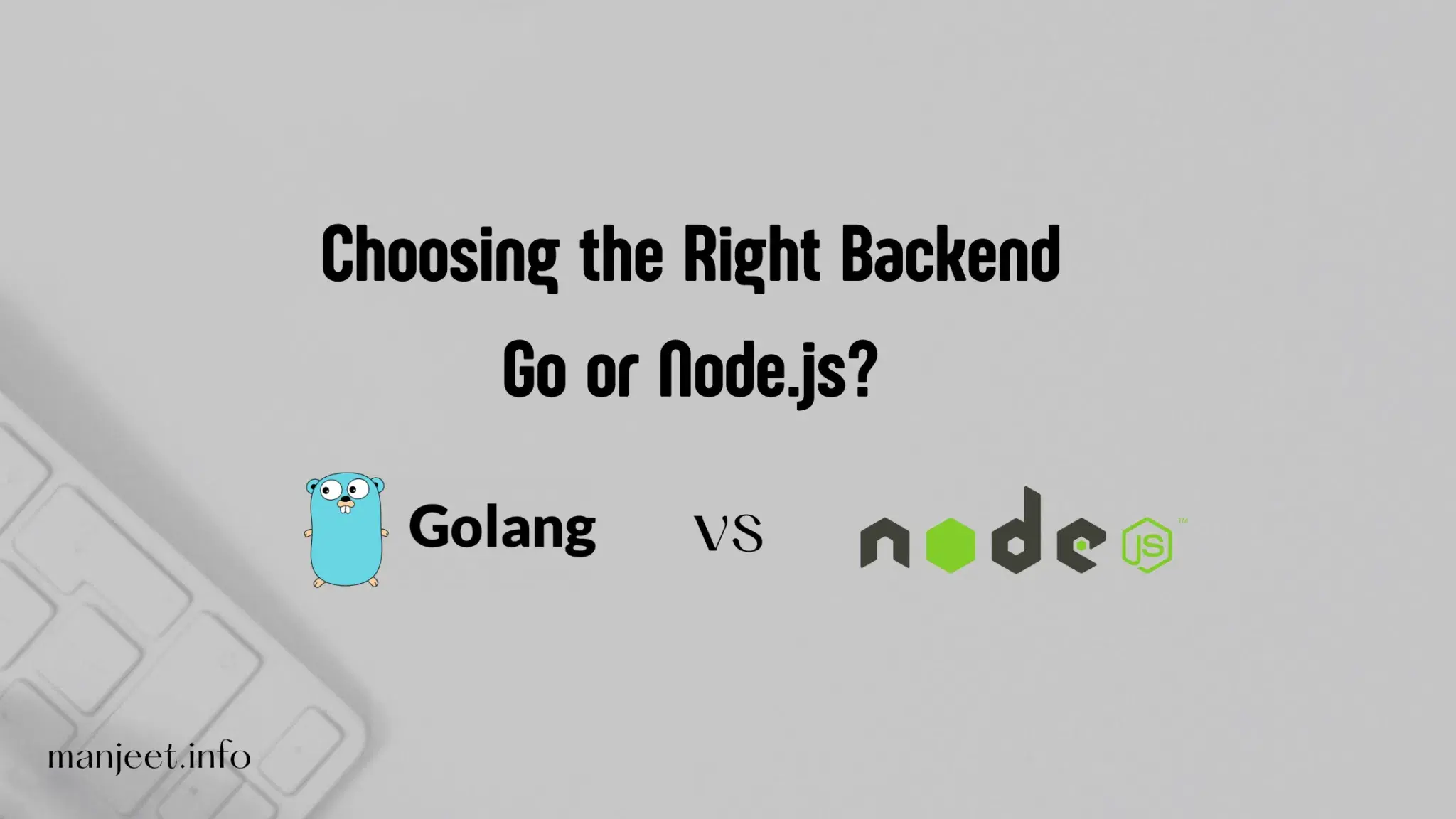Go and Node.js are two of the most widely used programming languages, which is why businesses of all sizes use them.
h languages:
Go (Golang)
Go, also called Golang, is an open source language that Google developed. It was created to support ease of use, speed, and effectiveness as the twin usability goals. Here are some highlights:
- Concurrent and Scalable:
- Concurrent programming is already supported using goroutines and channels. This makes concurrency manageable, while writing concurrent programs without worrying about the threading basics is possible.
- Popular camps: it’s successfully used to construct large and coherent systems, such as web servers and, recently, microservices.
- Static Typing:
- Go is statically typed, so the type checking is performed at compile time. This helps detect mistakes on time and produces high-quality code at runtime.
- The type system is minimal yet powerful, so there will be no confusion regarding code readability and flexibility.
- Fast Compilation:
- Go compiles very fast, so it is useful when the team frequently wants to test different changes.
- The binary resulting from compilation is also relatively small, which would be convenient for popping into containers.
- Standard Library:
- Its standard library is well stocked to meet many aspects such as networking, file Input/ Output, cryptography, etc.
- These packages will enable developers to create applications that would be very stable, while rarely or not always depending on third-party libraries.
- Community and Ecosystem:
- Members of the Go community display generous and quick responses toward each other. The GitHub platform offers numerous open-source projects and libraries for access.
- Packaged tools such as Gin (for developing web applications) and Echo (for building RESTful APIs) make it easy to create Go apps.
Node.js
Node.js is an open-source, cross-platform environment that allows JavaScript developers to run JavaScript code beyond the browser. Here’s what you need to know about Node.js:
- Event-Driven and Non-Blocking:
- All these are developed on the V8 JavaScript engine, and the most essential characteristic of Node.js is its event-driven, non-blocking I/O model.
- It is one of the best ways to deal with asynchronous tasks, so it can be used for creating real-time applications, APIs, and chatbots.
- NPM (Node Package Manager):
- NPM is the Node.js package manager, which allows the installation of modules.
- The NPM comes in handy because it can install third-party libraries straightforwardly for developers.
- Express.js:
- Express is one of the most widely used web application frameworks on Node.js.
- It simplifies managing middleware, making requests/responses more manageable so developers can develop APIs and others.
- Single-Threaded Event Loop:
- Node.js runs in a thread but has an event loop to make several connections possible.
- It is most useful for things that spend more time blocking, such as fetching an HTTP request or a database result.
- Full-Stack JavaScript:
- Node.js means it is possible to code with JavaScript on the backend and in the browser
- This full-stack capability has two advantages: the development process is less complex, and the code can be used repeatedly.
Read more Top 10Node.jsS Framework.s
Comparatively, it can be concluded that while using Go and Node.js, you get a set of parameters that can act as the strengths of the selected language. Go is great for writing system-level programs, and Node.js is mostly appropriate for developing real-time applications and API. However, you are free to go with the one that suits your needs for the project you are working on !!! 😊
